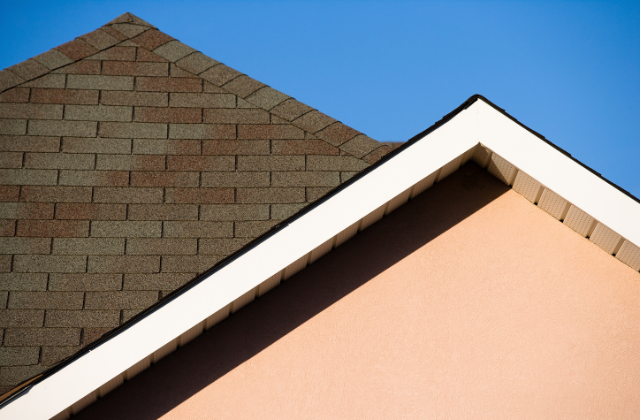When planning a new roof installation or replacement, one of the most common terms you’ll hear is pitched roof. But what does that mean, and why is it important for your home? Understanding the basics of roof pitch, along with the different types of pitched roofs available, can help you decide on what roofing services are best for you for durability, style, and long-term value.
What Is a Pitched Roof?
A pitched roof is any roof with a visible slope or angle, typically greater than 10 degrees. Unlike flat roofing systems, a pitched roof uses its incline to shed water, snow, and debris quickly. This design makes pitched roofs one of the most popular roofing styles for residential homes in Canada, where heavy rainfall and snowfall are common.
Types of Pitched Roofs
There are several types of pitched roofs, each with its own design benefits:
- Gable roof: A classic triangular roof style, known for its simplicity and effective water drainage.
- Hip roof: Slopes down on all sides, offering extra stability in windy areas.
- Mansard roof: A four-sided roof with a double slope, often used to maximize attic or living space.
- Saltbox roof: An asymmetrical design, popular for its unique appearance and historical charm.
The type of pitched roof you choose will depend on your home’s architecture, budget, and desired curb appeal.
Pitched Roof vs. Sloped Roof: What’s the Difference?
Homeowners often ask: What is the difference between a pitched and sloped roof? The short answer is, they’re the same. Both terms describe a roof with an angle or incline. However, “pitched roof” is the more technical and widely used term in the roofing industry.
Why Is Roof Pitch Important?
The pitch of your roof plays a major role in both performance and aesthetics. A steeper pitch helps snow and water drain faster, reducing the risk of leaks. It also influences the type of roofing material that can be used, from asphalt shingles to metal panels. Additionally, roof pitch affects attic space, ventilation, and even energy efficiency.
How to Determine Roof Pitch
Roof pitch is usually measured as a ratio of rise over run. For example, a 6:12 pitch means the roof rises 6 inches for every 12 inches of horizontal distance. While simple tools like a level and tape measure can help you estimate, it’s always best to consult a roofing professional for accurate measurements.
Expert Pitched Roof Installation in Southwestern Ontario
At Davidoff Roofing, our team can guide you through roof pitch options, materials, and styles to find the best solution for your home. Contact us today to learn more about pitched roof installation and schedule a consultation with our experts.
